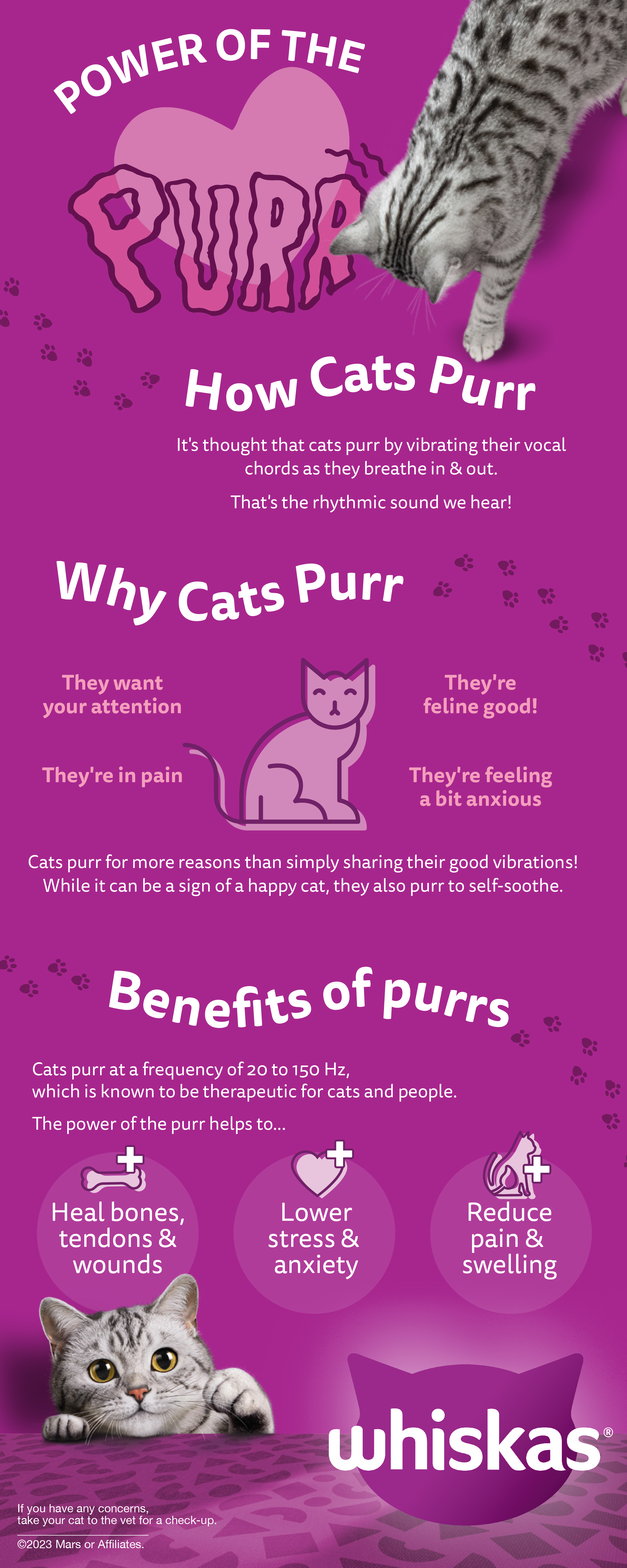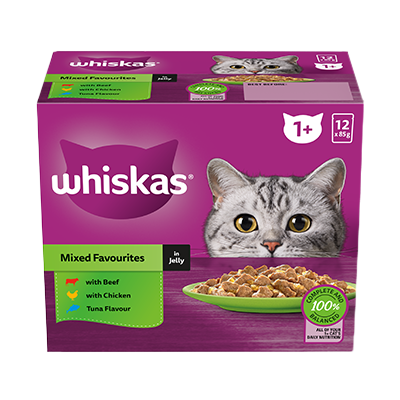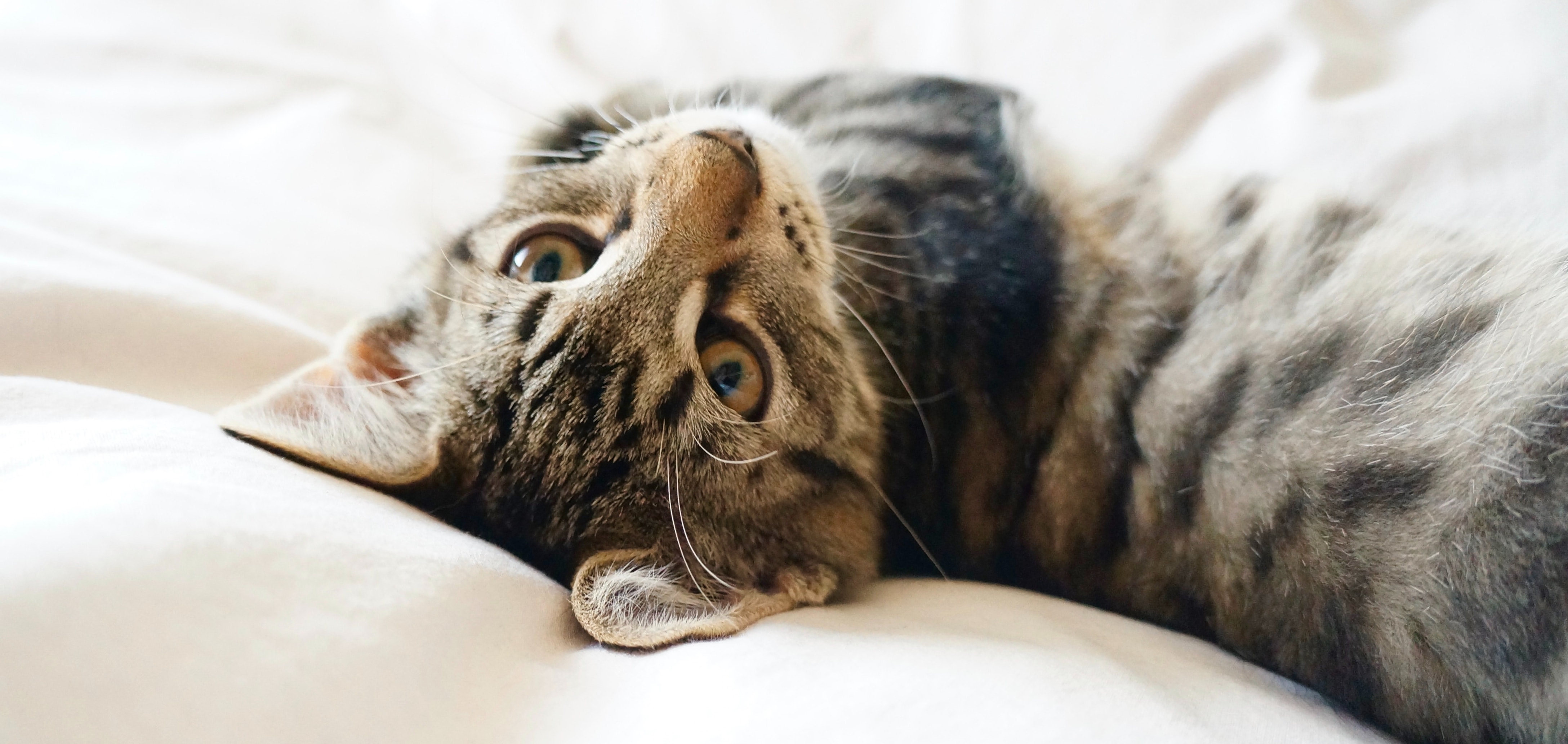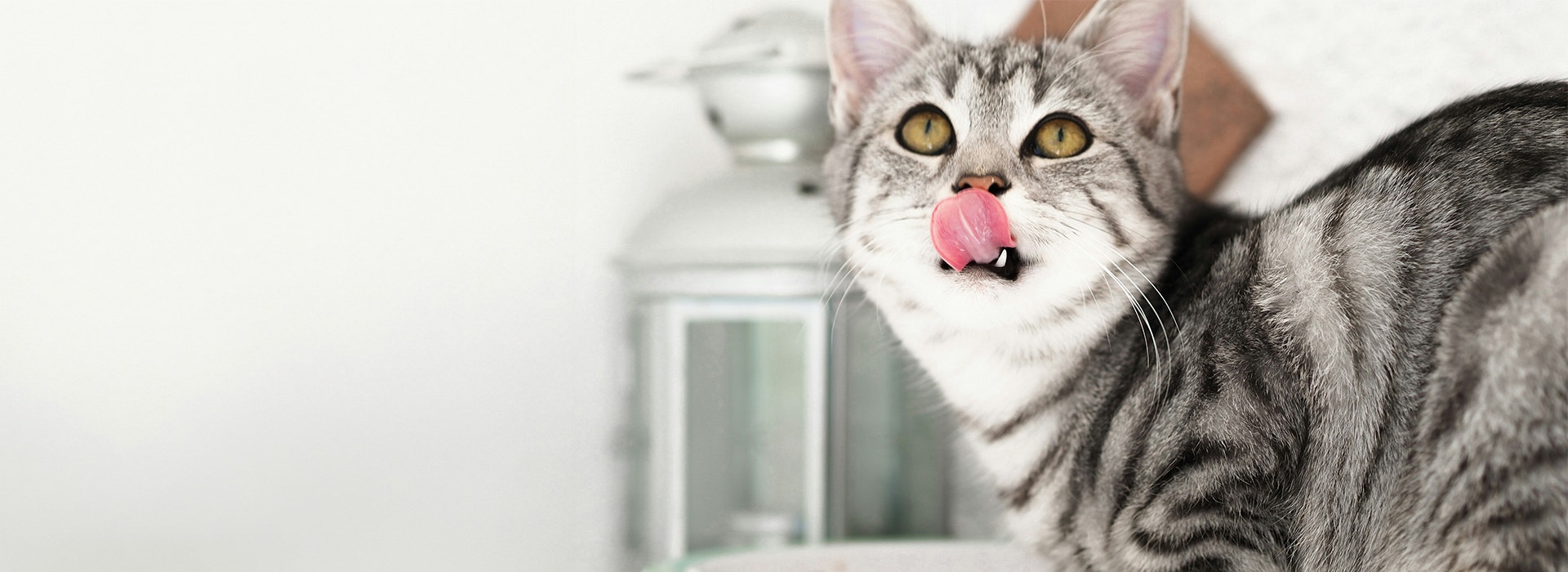
Photo by Alexander Andrews on Unsplash
How Do Cats Purr?
A purr is the most gratifying sound in the world for cat parents! It’s incredibly soothing and often associated with happy cats. While we don’t yet have clear cut answers to explain how cats make this unique noise, we have started to crack the code behind their special trick and what it means.
Understanding why cats purr
The [meaning behind a cat’s purr] can vary, but it’s usually a good sign that your furry friend is relaxed or that they want something from you (such as a mouth-watering bowl of WHISKAS®). They learn this habit from kittenhood, purring from just a few days old to attract their mother’s attention at feeding time. And if it works on mum, it can work on humans too, right?
That said, purring isn’t always a sign of happiness. Cats will sometimes use it to self-soothe if they’re feeling anxious or in pain. That’s because the low frequency of their purr can create vibrations within the body that can heal bones and wounds, repair tendons, ease breathing and decrease pain and swelling. The soft rumble can even have a soothing effect on humans. So, if you’ve ever noticed you feel much calmer around your furry friend, that’s one reason why.
How is the purr sound made?
As cats don’t have a special organ that allows them to purr, it’s somewhat of a mystery as to how they achieve this sound. When they purr, you can feel the vibration in their throat and chest, which has led to a couple of theories over time. But without any definitive evidence, cats are still keeping the secret to themselves.
Theory One: Blood flow
An old theory behind the mechanism of purring suggests that the sound is caused by blood flow in a cat’s chest. It was thought muscles compress the blood flow, causing the bronchial tubes (tubes that allow air in and out of the lungs) to vibrate – creating the purring sound.
Theory Two: Muscle contractions
More recent research suggests that cats vibrate their vocal cords as they breathe in and out to produce the rhythmic sound. This involves rapidly contracting the muscles of the larynx (voice box) and the diaphragm (the muscle at the base of the chest cavity) at around 20 to 30 times a second.

What if my cat doesn't purr?
If you’ve noticed your cat doesn’t purr, and they never have, there isn’t any reason to worry. For some cats, purring simply isn’t part of their skill set or how they show their personality. They might use body language and other sounds to communicate their needs and feelings instead, such as kneading, nuzzling, meowing, and chirruping.
On the other hand, if your cat usually purrs and then suddenly stops, it could mean something is up. In this case, keep an eye on their body language and behaviour to spot signs of anxiety, injury, or illness, such as limping, lack of appetite, vomiting and diarrhoea.
Physical considerations
If your cat seems to have lost their purr, it’s possible they’re in pain. Health complaints, like an injury, an infected tooth or an upper respiratory infection could all put a cat off purring. While they’ll often make the sound to self-soothe when feeling under the weather, their animal instincts tells them to stop purring to mask their discomfort. If you suspect your cat could be unwell, make an appointment to see your vet.
Emotional and environmental considerations
If your cat suddenly stops purring but nothing suggests they’re feeling unwell, it could be because they’re stressed and can’t fully relax. Big changes like moving home, the addition or loss of a family member or fellow pet, and a new routine can all make a cat feel a little out of sorts.
Do what you can to make them feel safe by creating a quiet space they can retreat to with all their essentials (food, water, litter tray and perhaps a scratching post) within reach. Remember to keep their food and water away from litter areas. If your cat is feeling open to affection, giving them a tickle behind the ears or under their chin might help coax out a happy purr.
While we may not fully understand how a cat purrs, we know it’s one of the many quirks that makes them so great!
Here at WHISKAS®, we’re always on a mission to bring out the happy purrs in our furry friends, with mouth-watering recipes and lots of love. To find out even more about our feline pals and how to care for them, check out the WHISKAS® Guide to Perfect Living.
@2023 Mars or Affiliates.








